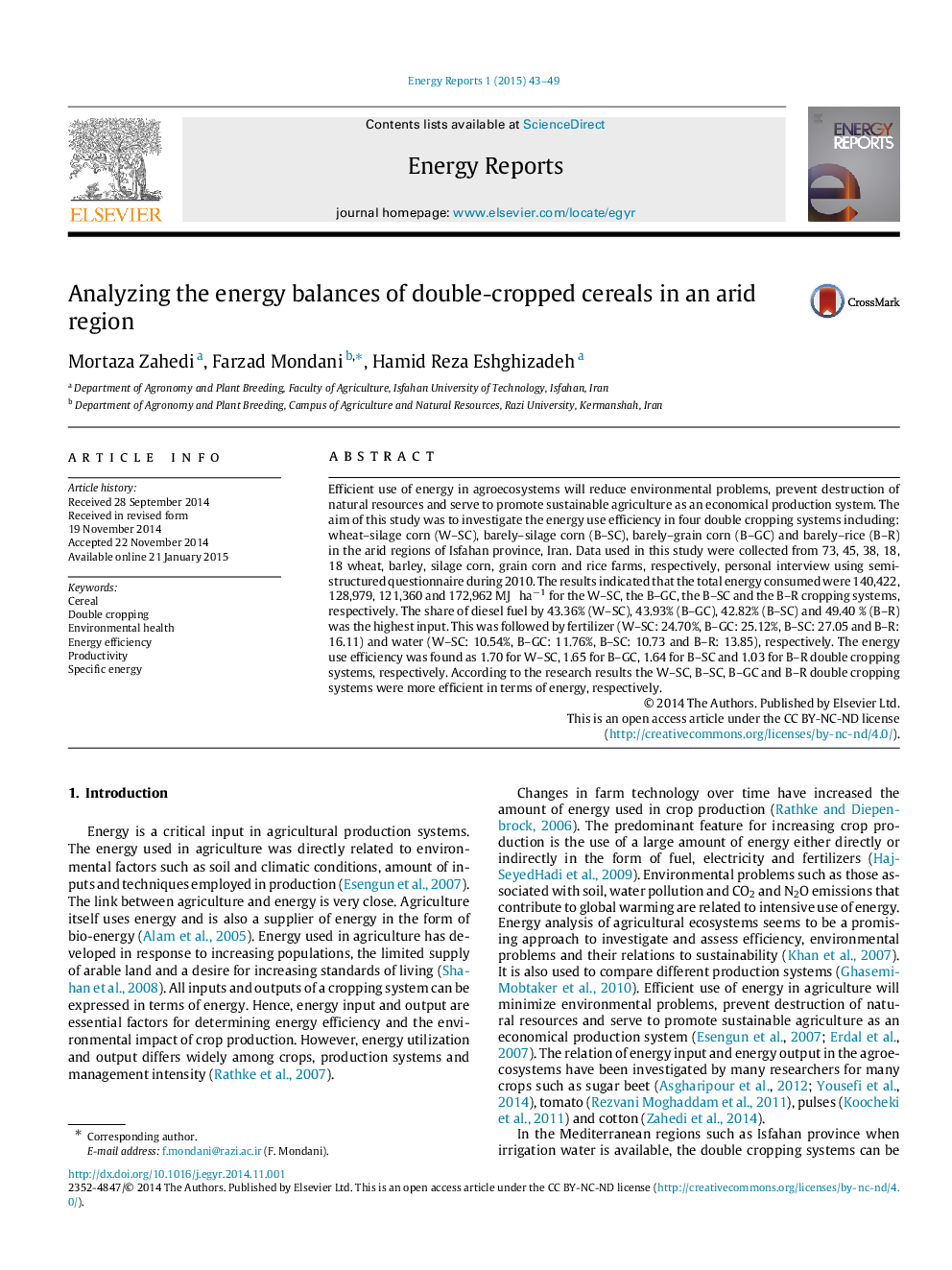| Article ID | Journal | Published Year | Pages | File Type |
|---|---|---|---|---|
| 1736770 | Energy Reports | 2015 | 7 Pages |
Efficient use of energy in agroecosystems will reduce environmental problems, prevent destruction of natural resources and serve to promote sustainable agriculture as an economical production system. The aim of this study was to investigate the energy use efficiency in four double cropping systems including: wheat–silage corn (W–SC), barely–silage corn (B–SC), barely–grain corn (B–GC) and barely–rice (B–R) in the arid regions of Isfahan province, Iran. Data used in this study were collected from 73, 45, 38, 18, 18 wheat, barley, silage corn, grain corn and rice farms, respectively, personal interview using semi-structured questionnaire during 2010. The results indicated that the total energy consumed were 140,422, 128,979, 121,360 and 172,962 MJ ha−1 for the W–SC, the B–GC, the B–SC and the B–R cropping systems, respectively. The share of diesel fuel by 43.36% (W–SC), 43.93% (B–GC), 42.82% (B–SC) and 49.40 % (B–R) was the highest input. This was followed by fertilizer (W–SC: 24.70%, B–GC: 25.12%, B–SC: 27.05 and B–R: 16.11) and water (W–SC: 10.54%, B–GC: 11.76%, B–SC: 10.73 and B–R: 13.85), respectively. The energy use efficiency was found as 1.70 for W–SC, 1.65 for B–GC, 1.64 for B–SC and 1.03 for B–R double cropping systems, respectively. According to the research results the W–SC, B–SC, B–GC and B–R double cropping systems were more efficient in terms of energy, respectively.
